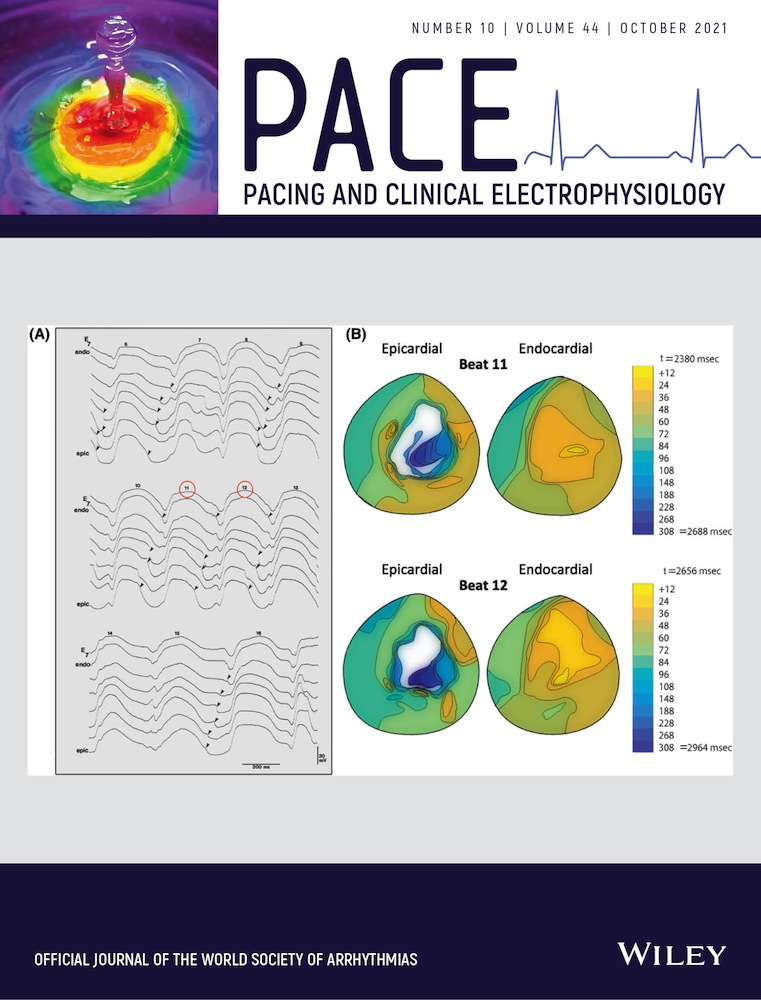Severity of spleep apnea syndrome and life-threatening tachyarrhythmias in patients with implantable cardioverter defibrillator
Abstract
Background
Sleep apnea syndrome (SAS) has been reported to be associated with a higher incidence of ventricular arrhythmias. The aim of this study was twofold: (1) to investigate whether in SAS patients receiving an implantable cardioverter defibrillator (ICD) the severity of SAS was associated with the occurrence of ventricular arrhythmias; (2) to assess whether changes in nocturnal apnoic/hypopnoic episodes may favor the occurrence of life-threatening arrhythmias, that is, sustained ventricular tachycardia (VT)/fibrillation (VF), requiring ICD intervention.
Methods
We enrolled 46 patients with documented SAS at polysomnography (apnea/hypopnea index [AHI] > 5) who also had a left ventricle ejection fraction (LVEF) < 35% and, according to primary prevention indications, implanted an ICD (Boston Scientific Incepta) able to daily monitor apnoic/hypopnoic episodes occurring during sleep. Patients were followed at 3-month intervals.
Results
At a mean follow-up of 18 months, 21 episodes of sustained VT/FV requiring ICD intervention were documented in eight patients (17.4%). Baseline AHI was significantly higher in patients with compared to those without ICD intervention. ICD interventions, however, were not preceded by any worsening of apnoic/hypopnoic episodes. The respiratory disturbance index (RDI) of the week during the event, indeed, was not different from that recorded during the previous 2 weeks (25.4 ± 11, 25.6 ± 10 and 25.1 ± 10, respectively; p = .9).
Conclusions
In patients with SAS who received an ICD for primary prevention of sudden death, those with ICD interventions showed a more severe form of the disease at baseline. ICD interventions, however, were not preceded by any significant changes in SAS severity.
CONFLITCS OF INTEREST
The author declares no conflict of interest, financial, or otherwise.
Open Research
DATA AVAILABILITY STATEMENT
The data underlying this article are available from the corresponding author on reasonable request.




